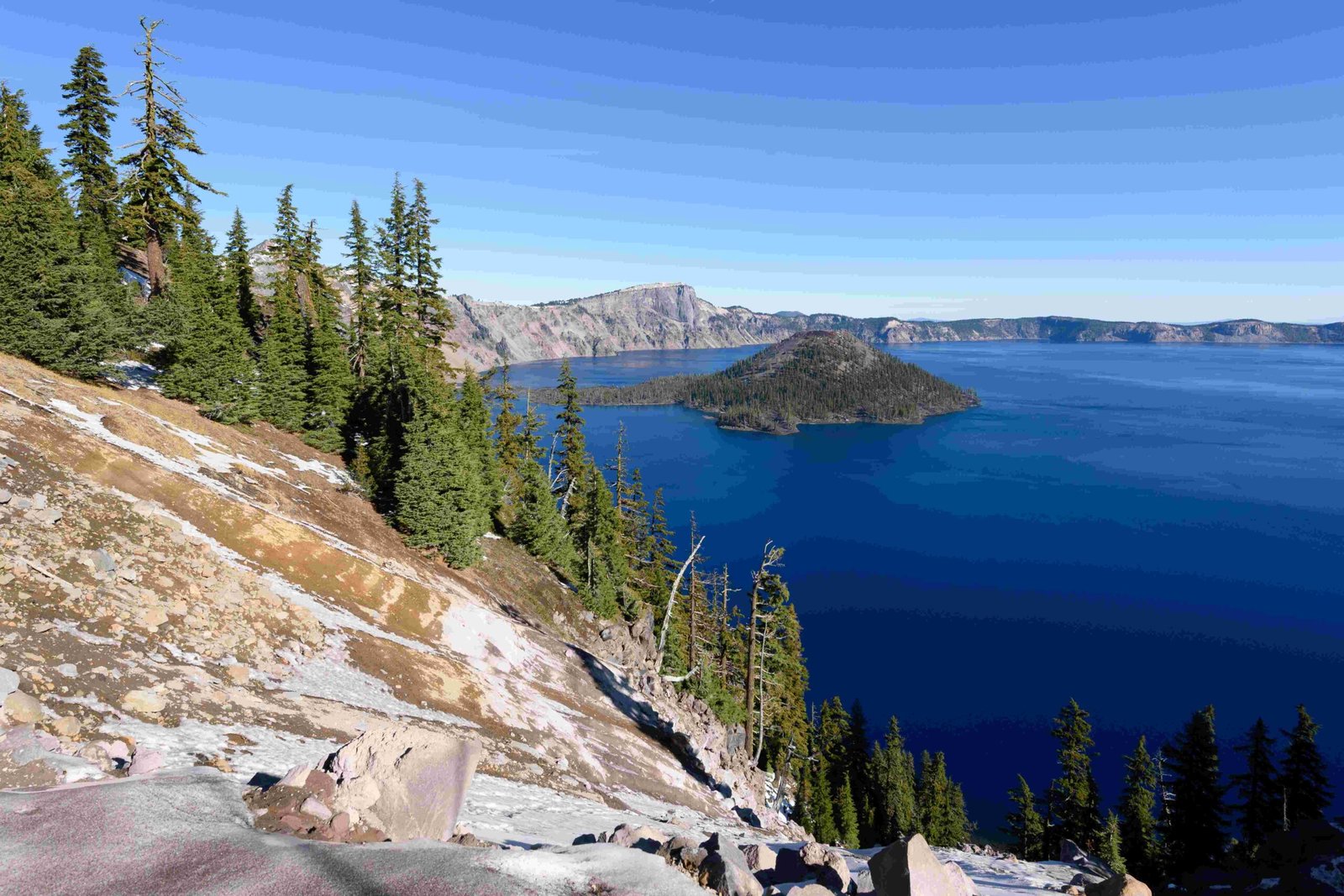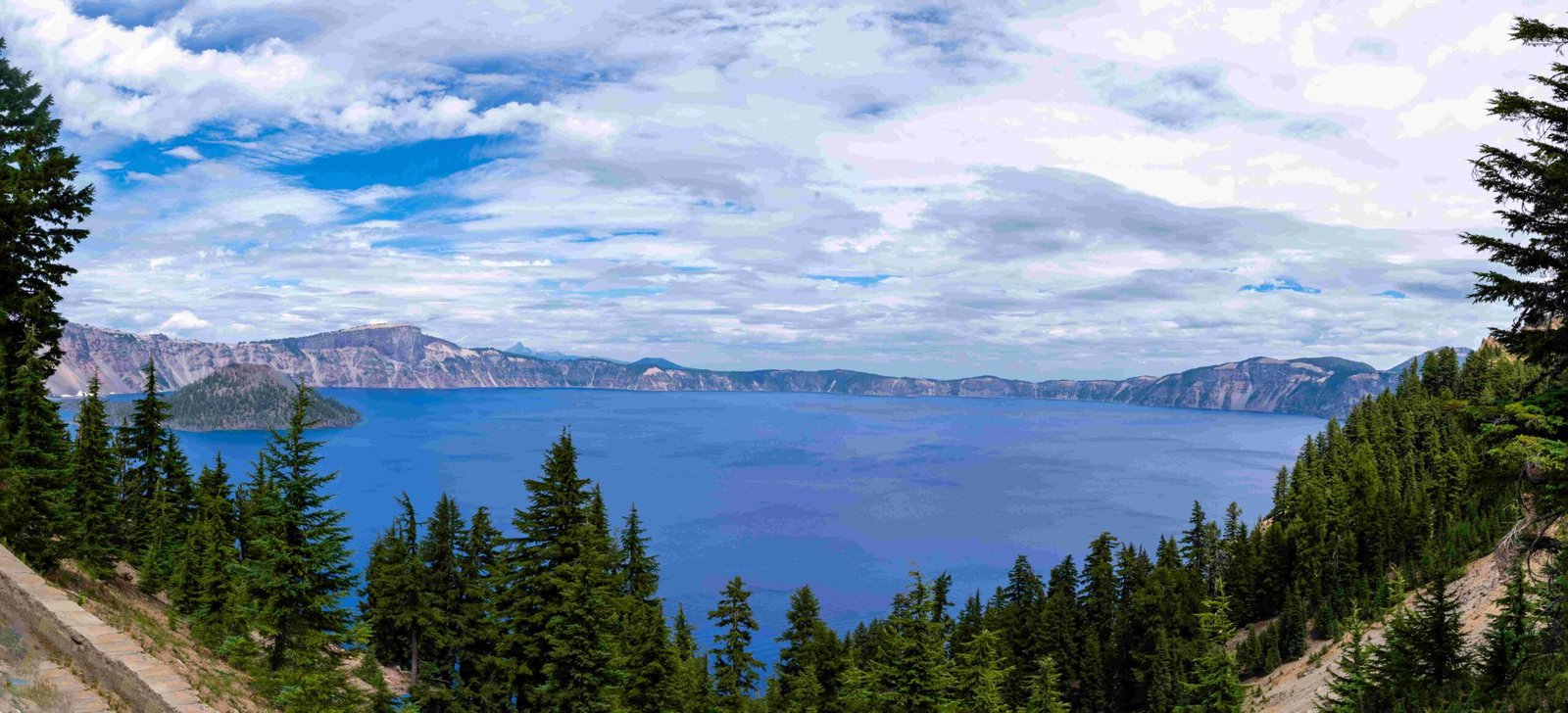Crater Lake National Park, renowned for its pristine beauty and deep blue waters, is home to black bears but has no recorded incidents of bear attacks on humans. Despite the lack of reported attacks, visitors should remain vigilant and informed about bear safety. This article explores the reality of bear encounters at Crater Lake, debunks common myths, and provides essential safety tips for park visitors to ensure a safe and enjoyable experience in this natural wonder.
What is the Likelihood of a Crater Lake Bear Attack?

While the term “Crater Lake bear attack” might conjure up frightening images, it’s important to understand that such incidents are extremely rare. In fact, there are no documented cases of bear attacks on humans in Crater Lake National Park. The park is home to black bears, which are generally less aggressive than their grizzly counterparts. However, this doesn’t mean visitors should be complacent about bear safety.
Bear Population at Crater Lake
Crater Lake National Park is home to an estimated 100-150 black bears. These bears are an integral part of the park’s ecosystem and are typically shy, avoiding human contact when possible. The park’s bear population density is relatively low compared to some other national parks, which contributes to the reduced likelihood of human-bear encounters.
How Can Visitors Prevent Bear Encounters at Crater Lake?

Prevention is key when it comes to bear safety. Here are some essential tips for avoiding bear encounters:
- Make noise while hiking
- Travel in groups
- Carry bear spray
- Store food properly
- Stay alert and aware of your surroundings
Proper Food Storage
One of the most critical aspects of bear safety is proper food storage. Bears have an incredible sense of smell and can be attracted to food odors from great distances. To prevent attracting bears to your campsite or picnic area:
- Use bear-resistant food containers provided by the park
- Store all food, trash, and scented items in your vehicle when not in use
- Never leave food unattended, even for a short period
- Clean up thoroughly after meals and properly dispose of garbage
What Should You Do if You Encounter a Bear at Crater Lake?
Despite taking precautions, there’s always a small chance of encountering a bear. If you do come across a bear:
- Remain calm and assess the situation
- Do not run
- Slowly back away while facing the bear
- Speak in a low, calm voice
- Make yourself appear larger by raising your arms
- If the bear charges, stand your ground (most charges are bluffs)
- Use bear spray if necessary
Types of Bear Behavior
Understanding bear behavior can help you respond appropriately in an encounter:
| Behavior | Description | Appropriate Response |
|---|---|---|
| Curious | Bear stands on hind legs, sniffs the air | Remain calm, speak softly, slowly back away |
| Defensive | Bear woofs, jaw-claps, or swats the ground | Give the bear space, slowly leave the area |
| Predatory | Bear follows you silently with head and ears up | Stand your ground, make noise, prepare bear spray |
Are There Any Reported Crater Lake Bear Attacks?
As mentioned earlier, there are no documented cases of bear attacks on humans in Crater Lake National Park. This fact underscores the effectiveness of the park’s bear management policies and the generally non-aggressive nature of black bears. However, it’s crucial to remember that bears are wild animals and should always be treated with respect and caution.
Bear Incidents at Crater Lake
While there haven’t been any attacks, there have been occasional bear incidents at Crater Lake:
- Food theft from improperly stored coolers or backpacks
- Bears approaching picnic areas or campgrounds
- Sightings on trails or near park facilities
These incidents highlight the importance of following bear safety guidelines to prevent escalation to more serious encounters.
What Bear Safety Resources Does Crater Lake National Park Offer?
Crater Lake National Park provides various resources to educate visitors about bear safety:
- Ranger-led programs on wildlife safety
- Informational brochures available at visitor centers
- Bear safety signage throughout the park
- Bear-resistant food storage containers at campgrounds
- Online resources on the park’s official website
Bear Safety Education Program
The park’s bear safety education program includes:
- Seasonal workshops on bear behavior and safety
- Junior Ranger activities focused on wildlife conservation
- Guided hikes with rangers discussing local wildlife
- Interactive displays at visitor centers
How Does Crater Lake’s Bear Management Compare to Other National Parks?
Crater Lake’s bear management policies are similar to those of other national parks but tailored to the specific needs of the park’s ecosystem and visitor patterns. Here’s a comparison:
| Aspect | Crater Lake | Yellowstone | Yosemite |
|---|---|---|---|
| Bear Species | Black bears only | Black and grizzly bears | Black bears only |
| Bear Population | 100-150 | 700-1000 | 300-500 |
| Reported Attacks | None | Rare, but occur | Very rare |
| Food Storage | Required | Required | Required |
| Bear Spray | Recommended | Highly recommended | Recommended |
What Myths About Crater Lake Bear Attacks Should Be Debunked?
Several myths and misconceptions about bear encounters at Crater Lake need to be addressed:
-
Myth: Crater Lake is overrun with aggressive bears.
Reality: The bear population is moderate, and black bears are generally not aggressive. -
Myth: Bear attacks are common at Crater Lake.
Reality: There are no recorded bear attacks on humans in the park’s history. -
Myth: You need to play dead if a black bear attacks.
Reality: This advice is for grizzly bears. With black bears, fight back if attacked. -
Myth: Bears are attracted to menstrual odors.
Reality: There’s no scientific evidence supporting this claim. -
Myth: Bear bells are the best way to avoid surprising a bear.
Reality: While helpful, human voices are more effective in alerting bears to your presence.
How Can Visitors Enjoy Crater Lake While Staying Safe from Bears?
Enjoying Crater Lake while staying safe from bears is entirely possible with the right approach:
- Plan your visit during daylight hours when bears are less active
- Stay on designated trails and in developed areas
- Carry bear spray and know how to use it
- Be aware of your surroundings and watch for bear signs
- Follow all park regulations and guidelines
- Attend ranger-led programs to learn more about local wildlife
- Use provided bear-resistant storage containers
- Keep a clean campsite and properly dispose of all waste
- Photograph bears from a safe distance (at least 100 yards)
- Report any bear sightings to park rangers
By following these guidelines, visitors can have a memorable and safe experience at Crater Lake National Park, appreciating the beauty of the landscape and its wildlife from a respectful distance.
